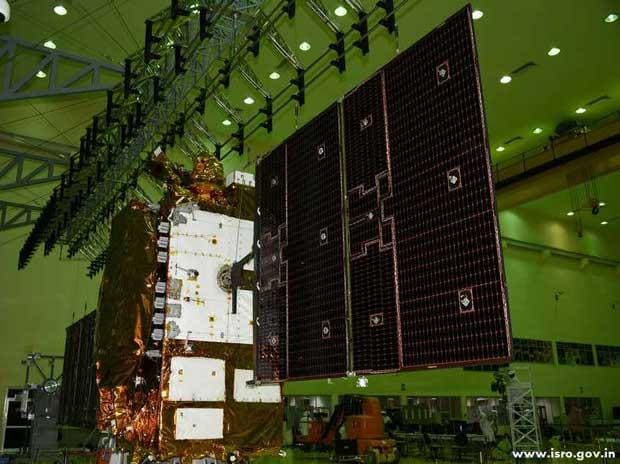The satellite will be placed in the geostationary orbit and this communication satellite is expected to help the IAF interlink different ground radar stations, airbases and AWACS aircraft.
The
Indian
Space Research Organisation (Isro) is planning to launch a
dedicated communication satellite for defence purposes next week.
GSAT-7A
is a communications satellite which can be used by the Indian Air
Force and the Indian Army.
Isro
is all set to launch the communication satellite GSAT-7A
on board the GSLV-F11 from Satish Dhawan Space Centre in Sriharikota
on December 19, 2018. The satellite will weigh 2.2 tonnes and will be
launched by the Geosynchronous Satellite Launch Vehicle (GSLV Mk II)
rocket, said Isro.
The
satellite will be placed in the geostationary orbit and this
communication satellite is expected to help the IAF interlink
different ground radar stations, airbases and AWACS (Airborne Warning
And Control System) aircraft.
GSAT-7A
is the 35th Indian Communication satellite built by Isro. The GSAT-7A
spacecraft is configured on Isro’s standard I-2,000 Kg (I-2K) bus.
The satellite is built to provide communication capability to the
users in Ku-band over the Indian region. Total cost of the GSAT-7A is
estimated to be in the region of Rs 6-8 billion and its life is
estimated to be around nine years, according to Isro sources.
The
satellite will enable the IAF to interlink different ground radar
stations, ground airbase and airborne early warning and control
(AWACS) aircraft, such as Beriev A-50 Phalcon and DRDO AEW&CS.
The satellite will also enhance Network-centric warfare capabilities
of the Indian Air Force and therefore enhance its global operations.
GSAT-7A
is also expected to give a major push for drone operations as it
would help the Navy reduce the reliance on on-ground control stations
and take satellite-control of military unmanned aerial vehicles
(UAV), which should help boost the range and endurance of the UAVs,
said industry experts.
In
addition to GSAT-7A, the IAF would also be getting the GSAT-7C in a
few years, to boost the network-centric operations.
The
GSAT 7 series was launched in 2013 as a dedicated communications
satellite for the Indian Navy, which made the Navy completely
independent of relying on foreign satellites.
GSAT
7 currently has a 2,000 nautical mile footprint and provides
real-time inputs to Indian warships, submarines and maritime
aircraft.
According
to reports, India has around 13 military satellites, with most of
them being remote-sensing satellites like the Cartosat-series and
RISAT satellites placed in the near-earth orbit for better scanning
of Earth.
However,
some of the Indian military satellites are placed in the
geostationary orbit. These are used for surveillance, navigation and
communication purpose by the armed forces.

No comments:
Post a Comment